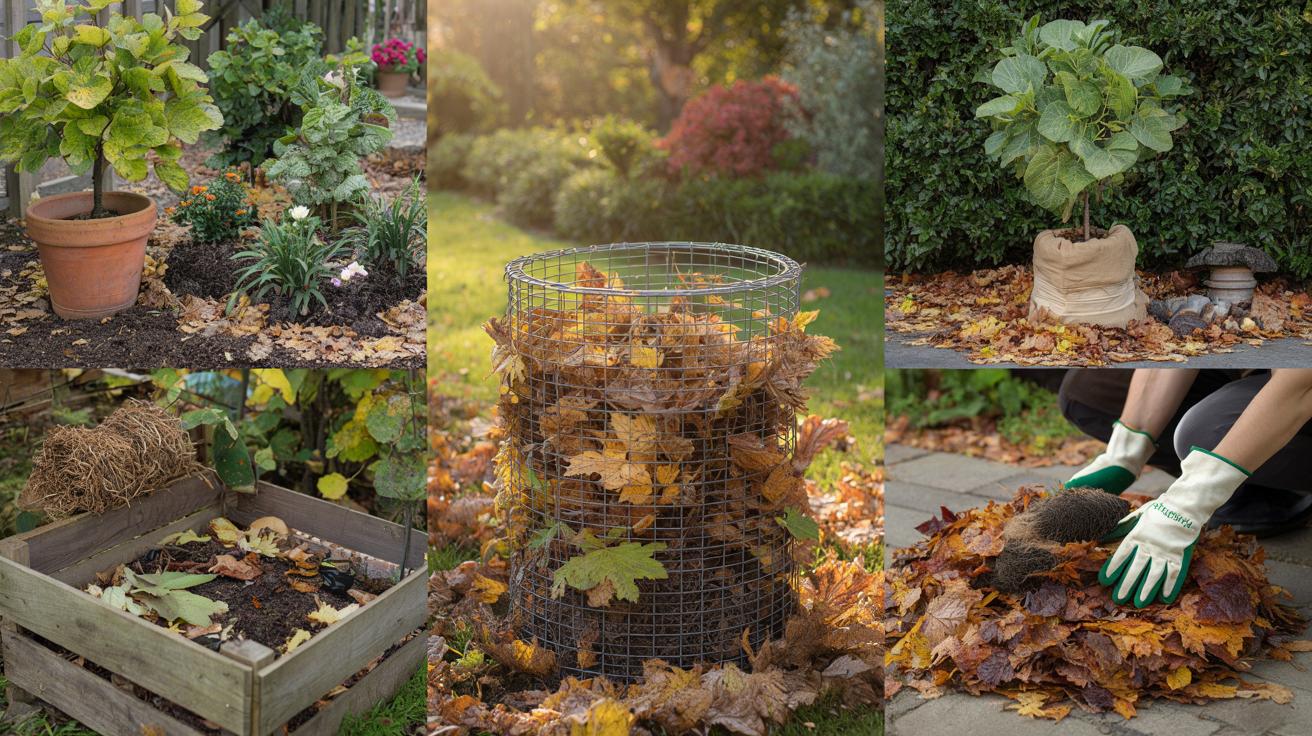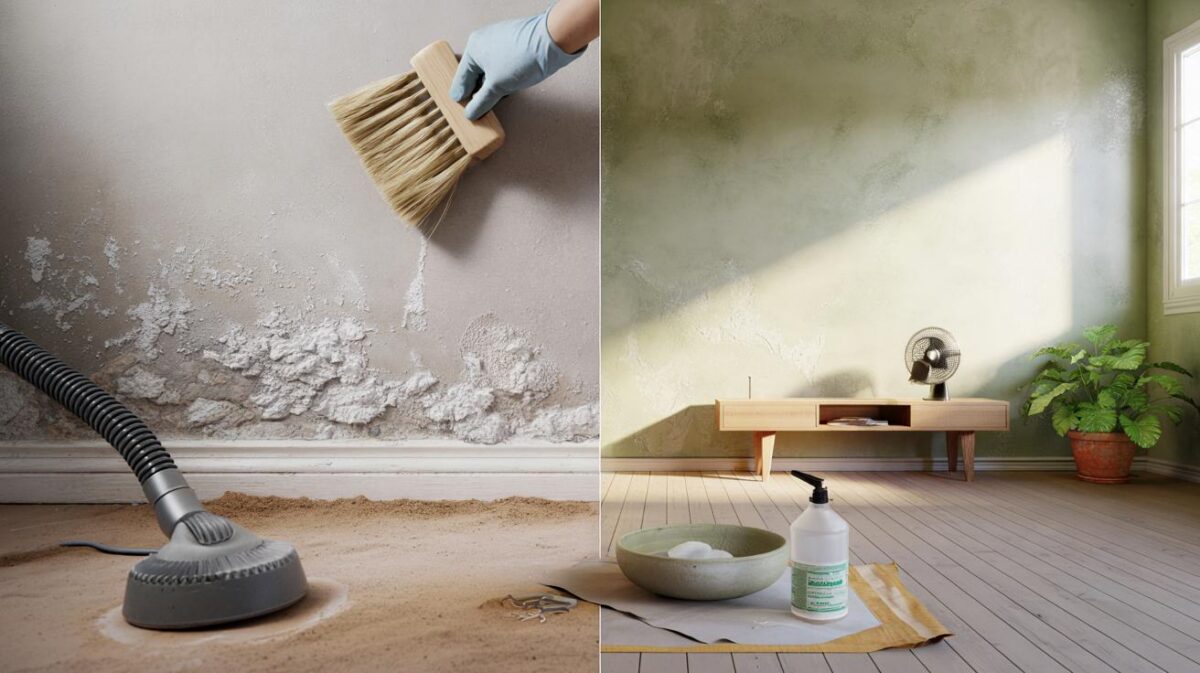Every autumn, pavements and lawns drown in crisp gold. Most of it gets bagged, binned, or burned. Here’s the truth hiding in plain sight: fallen leaves are a free resource for healthier soil, stronger plants and calmer weekends. The trick is to stop treating them like rubbish and start using them like gardeners with a secret.
A robin hopped along the hedge. You could hear that brittle hush when your boot crushes a sycamore. I picked up a leaf and traced the pale veins with my thumb. It felt like a map of the garden’s year: spring’s sugar, summer’s shade, autumn’s quiet return.
The street went still, just the soft scrape of a rake and breath you can see. I looked at the bin and then at the beds that had baked to dust last July. Another thought arrived, uninvited and obvious. There’s treasure everywhere. A quiet jackpot.
Make leaf mould: the soil’s slow gold
Leaf mould is not compost. It’s gentler, darker, and strangely silky. Pile leaves into a simple cage of wire and stakes, walk away, and in a year or two you’ll have a soft, crumbly conditioner that makes soil feel alive. This is slow magic. No drama, no heat, just fungi and time doing their patient work. It smells like woodland after rain.
I first saw it in a tiny back garden in Leeds. A retired teacher had tied chicken wire into a circle, waist-high, and filled it with nothing but leaves from the street. She tamped them down with a broom handle, then forgot it. The next spring her hydrangeas held moisture through a dry spell. A year on she dug a double handful of dark leaf mould into a pot of ferns. They lifted like umbrellas. Leaf mould is the one soil improver you can make with nothing but time.
Why it works is simple. Leaves are high in lignin and low in nitrogen, so the fungal crowd takes the lead. That builds structure. Structure holds water, lets air move, and keeps roots happy. Think of leaf mould as a sponge mixed with fairy dust: it won’t feed plants fast, but it helps everything else you feed actually stay put. Sprinkle it as a top-dress, mix it 1:3 with sharp sand for seed sowing, or use it to soften heavy clay. Your garden’s pulse slows, in a good way.
Shred and mulch: instant cover, fewer weeds
Run a mower over dry leaves to shred them, then blanket the soil 5–8 cm thick. Keep the mulch a hand’s breadth from plant crowns and tree trunks. Work in arcs, not perfection. A breezeless afternoon helps. Mown leaves knit together just enough to stay put, and they’ll slide between perennials like confetti for the soil. Shredded leaves make the most forgiving mulch you’ll ever spread.
We’ve all had that moment when a neat bed turns to weeds overnight. Leaf mulch slows that chaos. It softens rain impact, stops splash-back that spreads disease, and makes hoeing feel like slicing cake. Common slip-ups? Smothering a lawn with an unbroken leaf blanket, or piling mulch onto stems like a scarf. Go lighter around shallow-rooted plants, and for hungry veg, marry the mulch with a sprinkle of grass clippings or a dash of nitrogen-rich feed to balance the carbon. Let’s be honest: nobody does that every day. But once or twice in autumn changes spring.
One head gardener told me, “Mulch is quiet labour. It works while you sleep.” It stuck.
“Leave some places messy on purpose. That’s where the good things happen.” — a Bristol gardener with dirt under her nails
- Feed your compost: Layer leaves as the “browns” between kitchen peelings and green clippings. They stop slimy heaps, add air pockets, and turn waste into rich compost faster.
- Winter insulation: Heap leaves around lifted dahlias in crates, cushion potted figs, or wrap outdoor taps. Loose, dry leaves trap warmth like a duvet without smothering.
- Wildlife refuges: Rake leaves into a quiet corner for a hedgehog bed, line the base of a bug hotel, or tuck a pile under a hedge. More life now means fewer pests later.
Leave some, share some: a neighbourly cycle
There’s a balance to strike. You don’t have to gather every leaf or chase them down the street. Keep paths safe. Clear the lawn if leaves mat and shade it. Then treat the rest as raw material. Bag a few stacks for future “browns”, cage a corner for leaf mould, lay a mulch around roses and rhubarb, and gift a sack to the community garden. A tidy garden isn’t always a healthy garden. Give the wind a job, not a fight. Swap embarrassment for abundance. The sound of a rake can be a promise instead of a chore.
| Point clé | Détail | Intérêt pour le lecteur |
|---|---|---|
| Leaf mould | Wire cage, packed leaves, 12–24 months to a silky soil conditioner | Free, low-effort way to boost structure and moisture retention |
| Shredded mulch | Mow leaves, spread 5–8 cm, keep off crowns and trunks | Fewer weeds, steadier moisture, gentler soil temperatures |
| Three quick wins | Compost “browns”, winter insulation, wildlife refuges | Cleaner heaps, protected plants, a garden that supports itself |
FAQ :
- Which leaves are best for the garden?Oak, beech, hornbeam, birch and fruit-tree leaves are excellent. Tougher leaves like holly or magnolia break down slower; shred them or mix with softer types for speed.
- Can I use leaves with signs of disease?Avoid leaves heavily marked with rust, scab or blight where you grow the same plants. Hot composting can help, but safer to bag and send to council green waste if in doubt.
- Will leaves steal nitrogen from my soil?Whole leaves on the surface won’t, but mixing large amounts into soil can lock up nitrogen for a while. Keep leaves on top as mulch, or pair with grass clippings in compost.
- Do I need a shredder?No. A mower on a high setting works brilliantly. Run over a pile on the lawn or driveway. Dry leaves shred best and stay put longer once spread.
- How long does leaf mould take, really?About a year for a rough mulch, two years for that crumbly, dark texture. Speed it up by shredding first and poking air holes into the cage mid-winter.










Brilliant rundown—leaf mould as “slow gold” is a keeper. I started a chicken‑wire cage today; do I need to wet the leaves first or just rely on autumn rain?
If I spread shredded leaves 5–8 cm, do I risk nitrogen tie‑up for spring veg? The FAQ says keep it on top, but I’m woried about hungry soil.